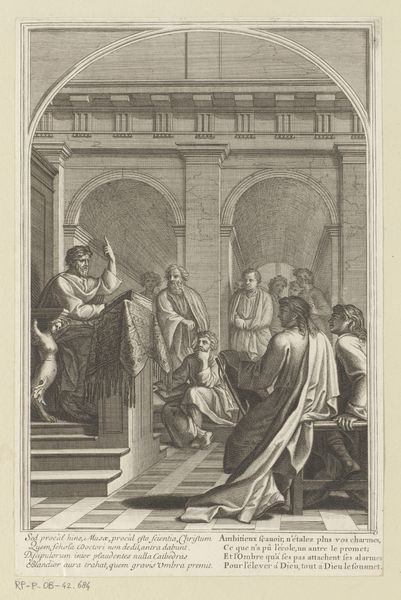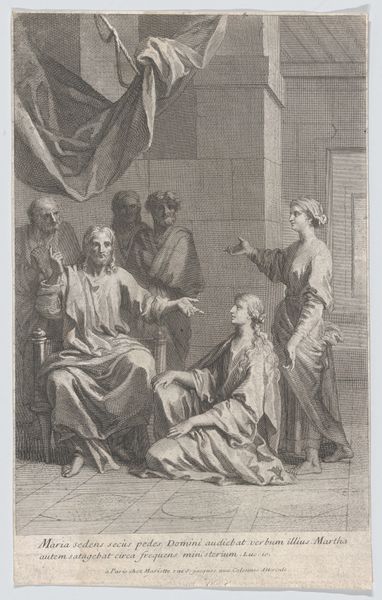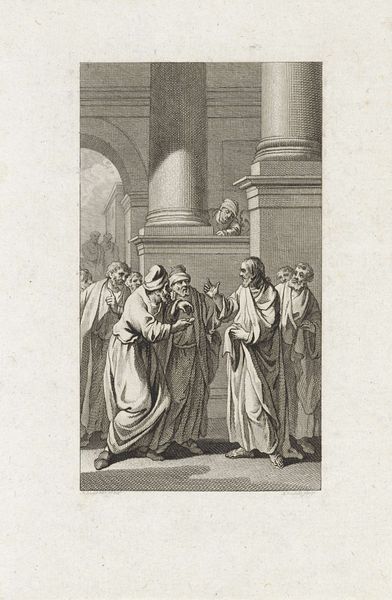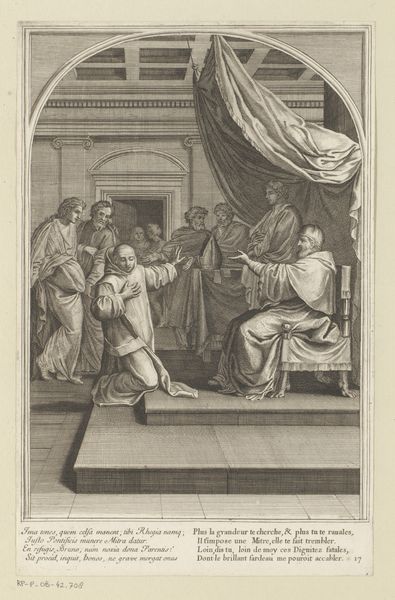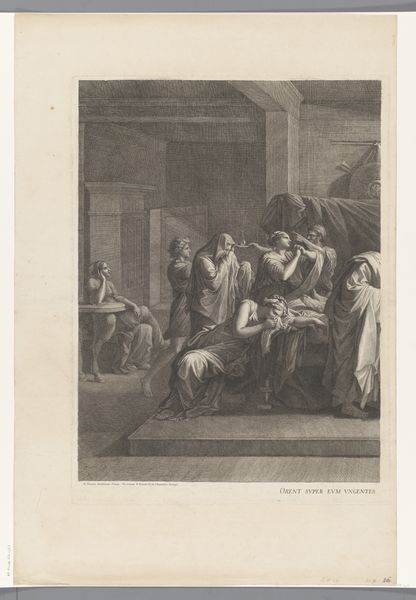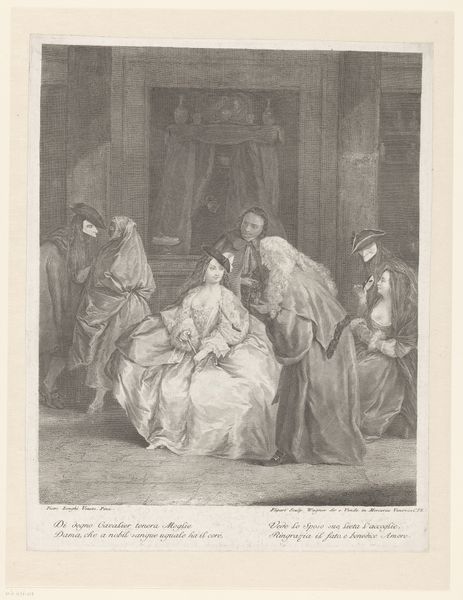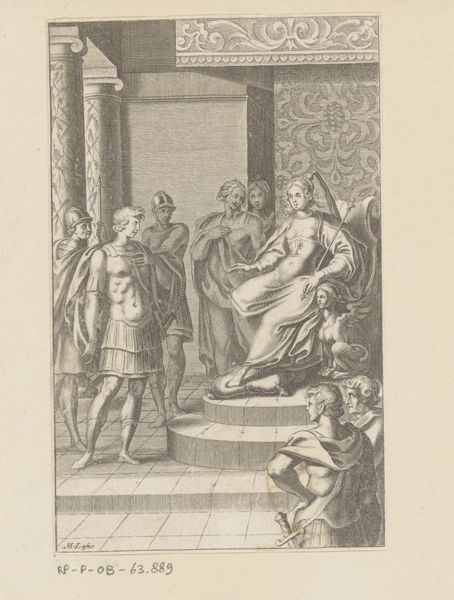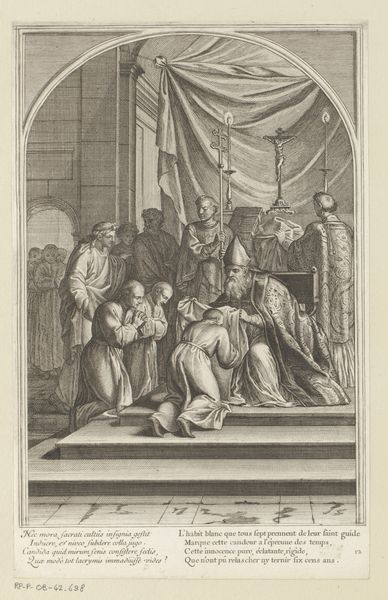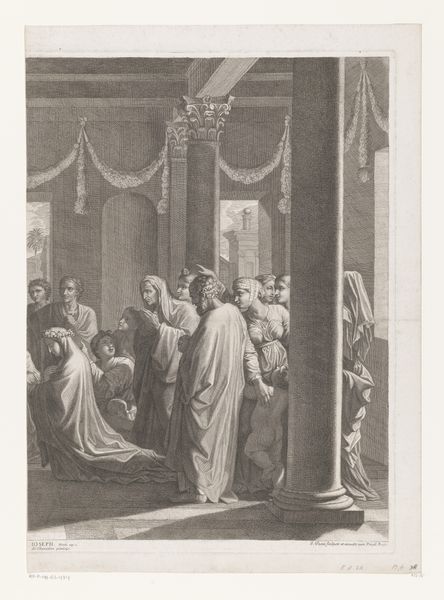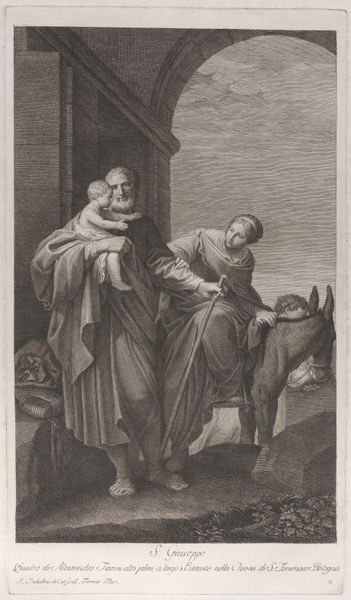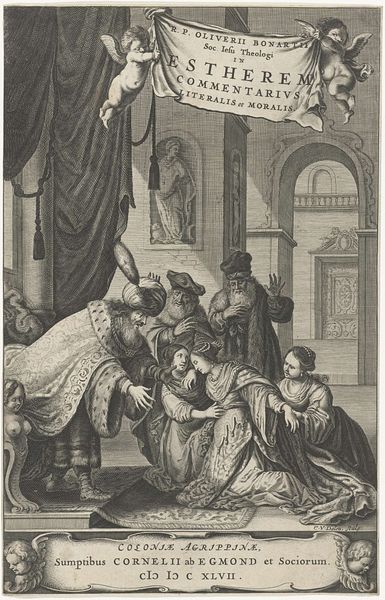
print, engraving
#
baroque
# print
#
old engraving style
#
line
#
history-painting
#
engraving
Dimensions: height 348 mm, width 224 mm, height 340 mm
Copyright: Rijks Museum: Open Domain
Curator: Here we have "Aankomst van de Heilige Bruno in Rome bij Urbanus II," or "The Arrival of Saint Bruno in Rome Before Urban II," crafted by François Chauveau between 1623 and 1676, housed here at the Rijksmuseum. A baroque print in the line technique. Editor: My initial impression is… weight. Despite being a line engraving, there's a monumental heaviness conveyed, especially in the drapery and the architectural elements. It feels somber, doesn’t it? Curator: Absolutely. The texture comes from the medium itself. Think of the laborious process: the artist carefully incising lines into a metal plate, controlling the pressure and angle to create varying depths. Editor: So the mood of the work—the solemnity you mentioned—is actually rooted in the making. Each line a conscious act of labor. Curator: Precisely. And the choice to depict this historical moment—Saint Bruno’s arrival, a gesture of reverence to Pope Urban II—it elevates the church and its figures through meticulous detail and skillful representation. This isn't just paper; it's a carefully produced, politically charged object. Editor: It’s fascinating how the economic realities—the labor of the engraver, the market for these prints, even the cost of paper and ink—underpin such an idealized image of spiritual devotion. Curator: You make a great point. This print underscores how faith, power, and materials are intertwined. It's less about spontaneous inspiration and more about carefully planned production. Editor: Well, now when I look at this engraving, I appreciate how its creation mirrors, in a way, the kind of reverence it shows in the scene depicted. A quiet, careful act of devotion in its own right, rendered materially. Curator: That’s lovely way to put it, understanding a moment in history shaped by tools and deliberate production!
Comments
No comments
Be the first to comment and join the conversation on the ultimate creative platform.
